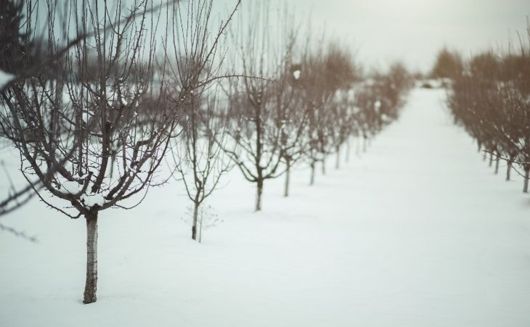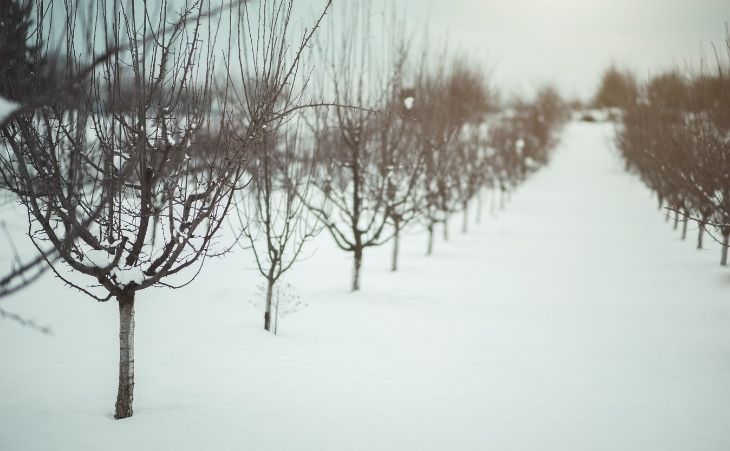Chill Hours for Fruit and Nut Trees


Many varieties of fruit and nut trees need a certain amount of time exposed to cold temperatures, to be able to bud and set fruit the following spring.
What are Chill Hours?
Chill hours are the number of hours spent below the temperature of 45 degrees F. Nut and fruit trees (except for citrus) need a specific number of chill hours each winter to regulate their growth. Chill hours do not have to be consecutive; it is a cumulative total for the dormant season.
Dormancy begins in late fall and lasts into early winter, initiated by lengthening days and cooler temperatures. The tree’s hormones suppress buds for next season's foliage and flowers until conditions are right for tender new growth. For a tree to come out of dormancy, bloom and set fruit they require a certain amount of winter cold, their “chilling requirement”, followed by warmer temperatures.
Chilling requirements vary widely among varieties. Generally speaking, fruit and nut trees that require higher chill hours (800-1000) are better suited for cooler northern climates, while lower necessary chill hours (500 or less) are suited for warmer climates in the Southern region.
It is not always best to choose a variety with the lowest amount of required chill hours. A low-chill tree in a high-chill area would break dormancy too soon and fruit buds could be damaged, or even killed, by the cold weather. It is best to research the climate in your area and choose a compatible tree accordingly.
Chilling hours also vary from year to year. For example, a region that averages 600 chill hours per year might receive only 450 hours in a warm winter, but 900 in a cold winter. Therefore, it is good to plant several different cultivars with a range of chilling requirements.
Why are Chill Hours Important?
Fruit trees are a serious investment in time, money and growing space, so choosing the right tree from the start can save you a lot of headaches.
If you have a fruit tree that will not bloom or produce fruit, it could be due to not receiving enough chill hours. Additional factors that affect fruit set include: the age of tree, nutrition, proper pollination, and weather during bloom. Remember, trees are complex biological systems, and are affected by a huge range of factors and variables.
How to find the Required Chill Hours
Many of our fruit trees and nuts have the required chill hours listed under the Characteristics section of their descriptions. See example below:

If you are unable to find information on the chill hour requirement for the tree you are interested in, try a quick google search or utilize the services of your county's Extension Agent. They can give you information about plant hardiness and chill hours for your area and provide recommendations on fruit trees and other plants that do well near you, as well as offer soil tests if needed.
While we encourage you to reach out to your local extensions and universities for your region's average chill hours, here is a visual map created for the United States.
- Article Categories:
- How To Grow
- Spring Gardening
- Summer Gardening
- Fall Gardening
- Winter Gardening







































